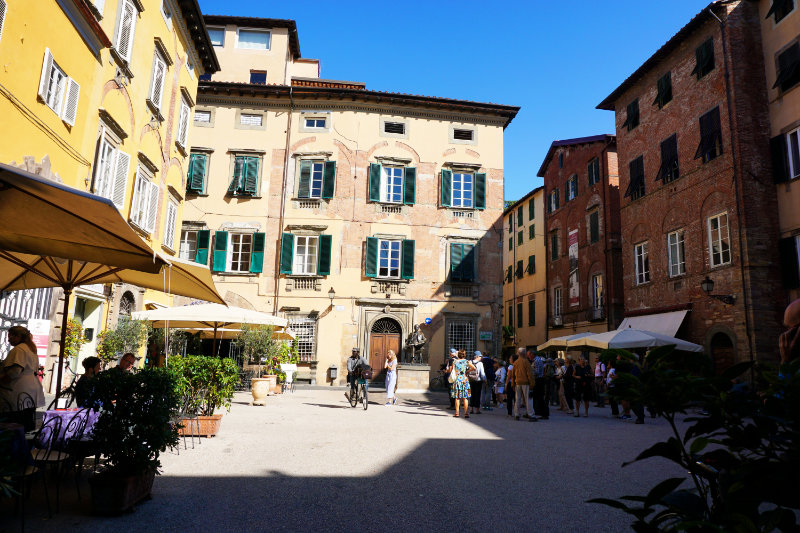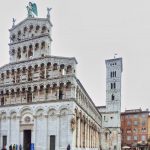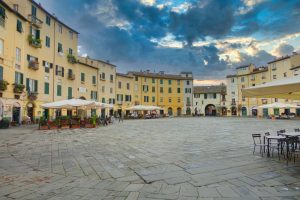The AIDAperla has docked in Livorno. Passengers stream off the ship and take the buses to Florence or Pisa. I also disembark, get on a bus and let me drive to Lucca. A Lucca short visit in 2 hours, which in retrospect were much too short.
Where is Lucca and some city history
Lucca is a city of almost 90,000 inhabitants in Ilalia. The city is located about 20 km from Pisa on the small river Serchio.
Around 180 BC Lucca becomes a Roman colony, along with Pisa. Thus the land could be taken possession of for Rome and the Apuans living here had to submit. Over the years Lucca was a popular residence for dukes and market counts. A well-functioning textile industry was established here, which was known for colorful silk and brought the city a certain wealth and influence.

Later, political unrest led the dyers and weavers to flee to Venice. Despite existing guild laws that provided for death for guild members if they pursued their work outside Lussa, the refugees took advantage of Vendig’s asylum and continued to work there.
After the Austrian suzerainty was driven out by the French revolutionary armies, the Republic of Lucca was forced to introduce a French-style democracy in 1799/1800 and to live in total dependence on Napoléon Bonaparte. After Napoléon’s fall, Lucca became a pawn in politics for a while. It was not until 1859/61 that the territory joined the new unitary state of Italy.
Stroll through Lucca
From the coach we went through small alleys towards the old town. Past small stores, restaurants and cafes until we came to a large square.

In the old Roman marketplace stands the church of San Michele in Foro (St.Michael in the Forum). The church was built in the 12th century. The facade is beautiful and articulated with columns, and cornices. San Michele is a successful example of Tuscan architectural forms.

I really like the main facade. It looks so delicate and light because of the small columns in front of it.
Our way led us further to the Torre Guinigi. Unfortunately, there are only 230 steps leading up to the tree-covered platform. With my broken foot unfortunately almost insurmountable. Too bad I would have loved to enjoy the view from up there.
In Lucca there are many towers that were built for defense purposes. Especially wealthy families built these towers and tried to show off their wealth. The Torre Guinigi is about 44 meters high and was built by the silk merchant family Guigini in 1384. The garden with the seven holm oaks on the roof of the tower was built later by the family. It is supposed to symbolize the renewal/rebirth.
When you make a Lucca short visit, you should not miss to go to Piazza dell’Anfiteatro. The town square in the heart of the old town of Lucca was built from the remains of a Roman amphitheater. This used to be a public meeting place, a venue for the locals. Today there are cafes and restaurants that invite you to linger.

Two hours is clearly far too short to explore this small Tuscan town. We still passed numerous churches, all of which would certainly have been worth a visit. I was still impressed by the Cathedral of San Martino. The church building from the 12th century is located near the city wall at the cathedral square. The facade of the church is higher than the nave behind it. This has been intentionally designed completely inconsistent. Standing in front of the building you can always discover other interesting elements.

Much too quickly our short stay in Lucca was over and we had to return to the ship. But I am sure that I will come here again, but then with 2 healthy feet. The city still has so much to offer and and a Lucca short visit in 2 hours is not enough!








Leave a Reply